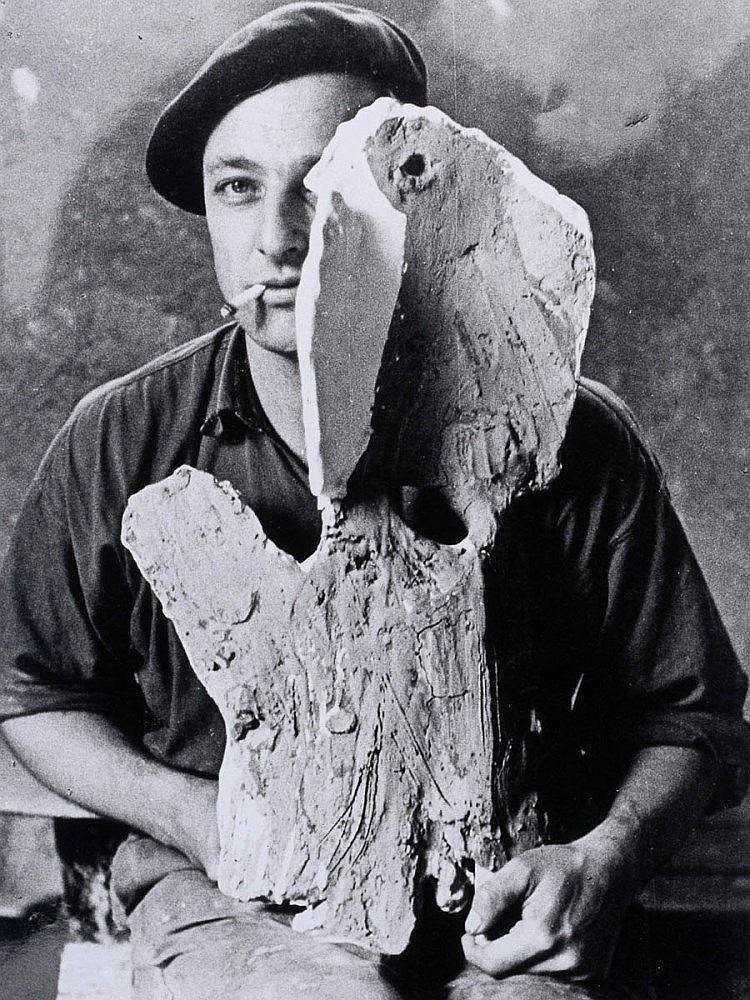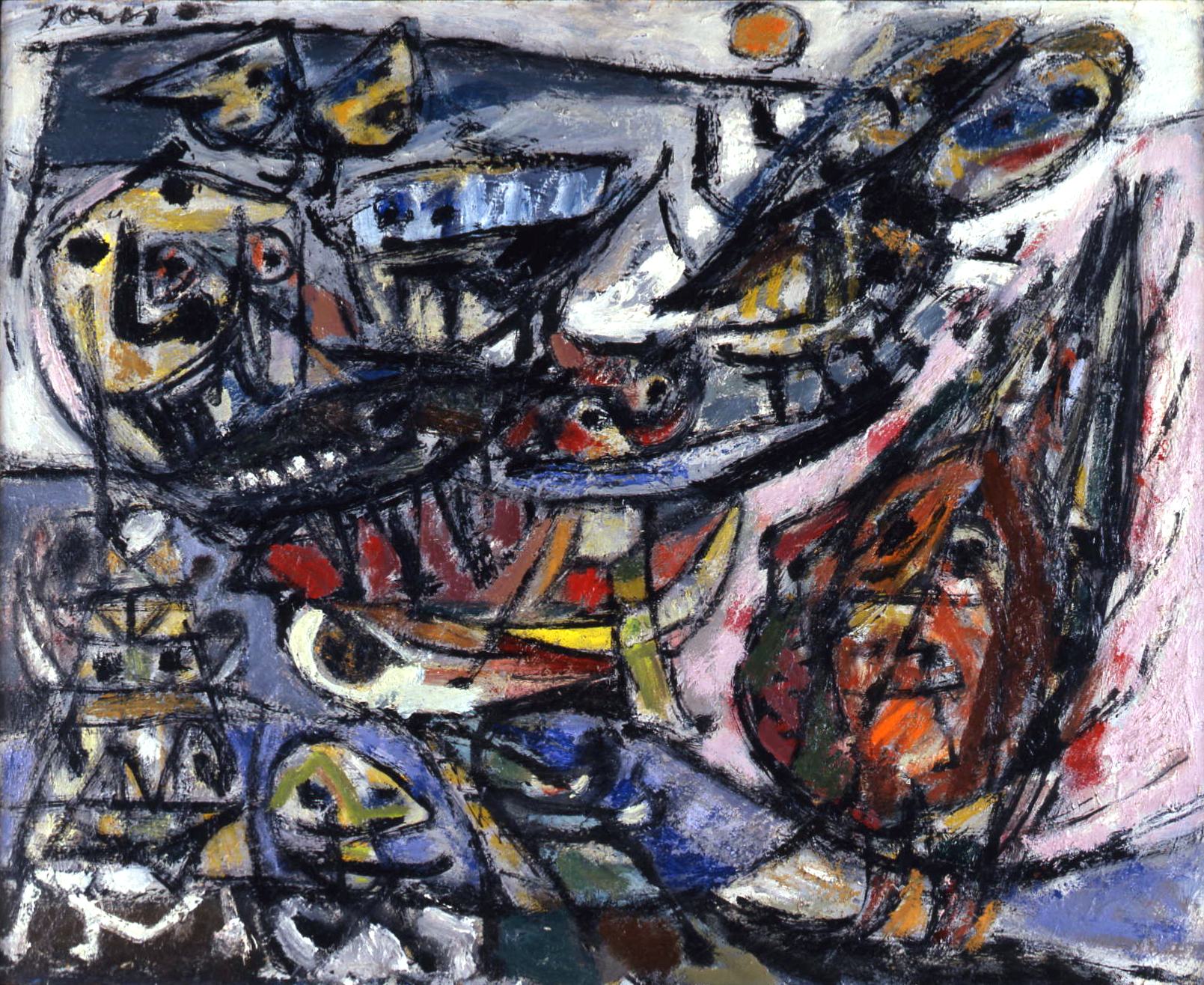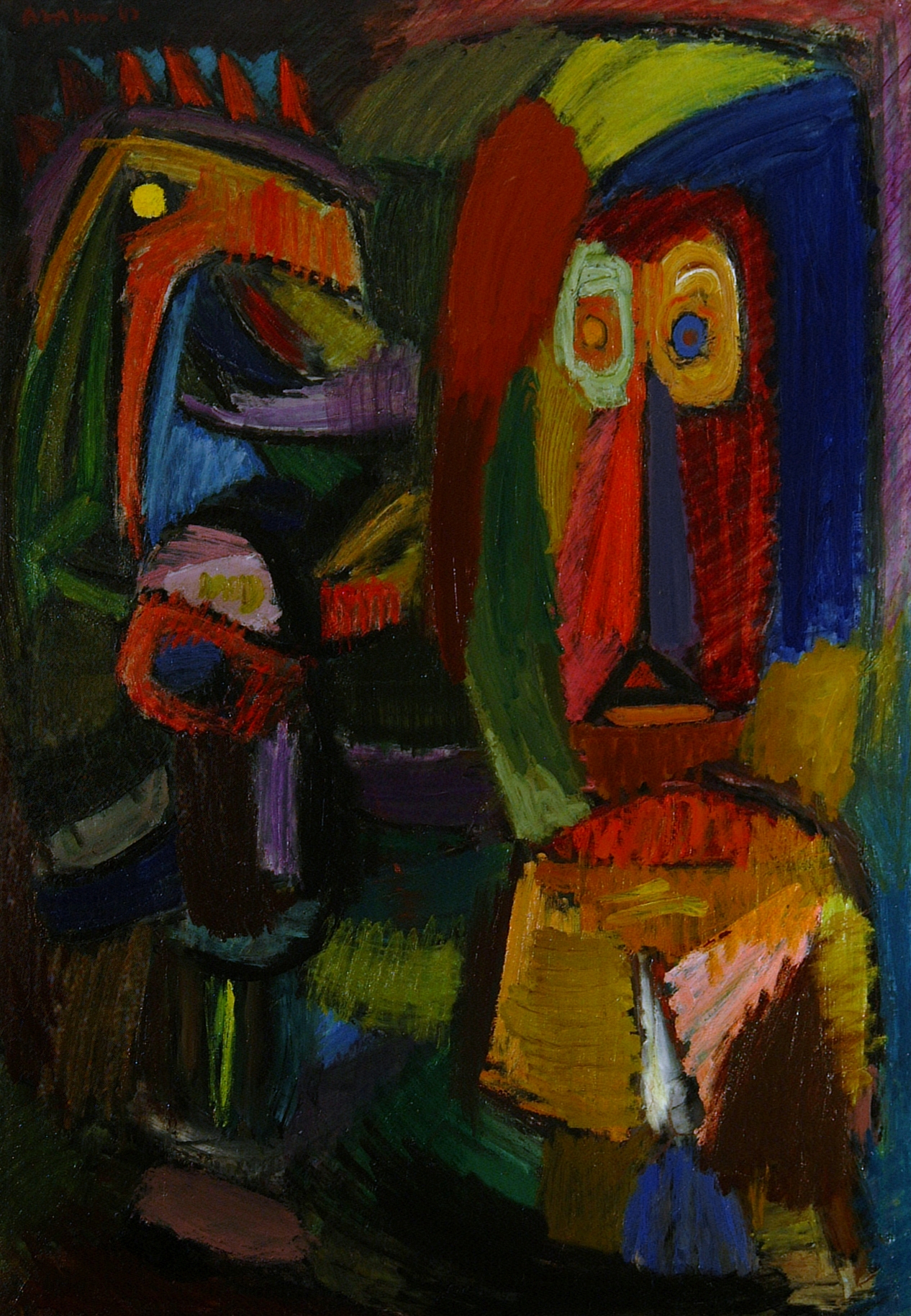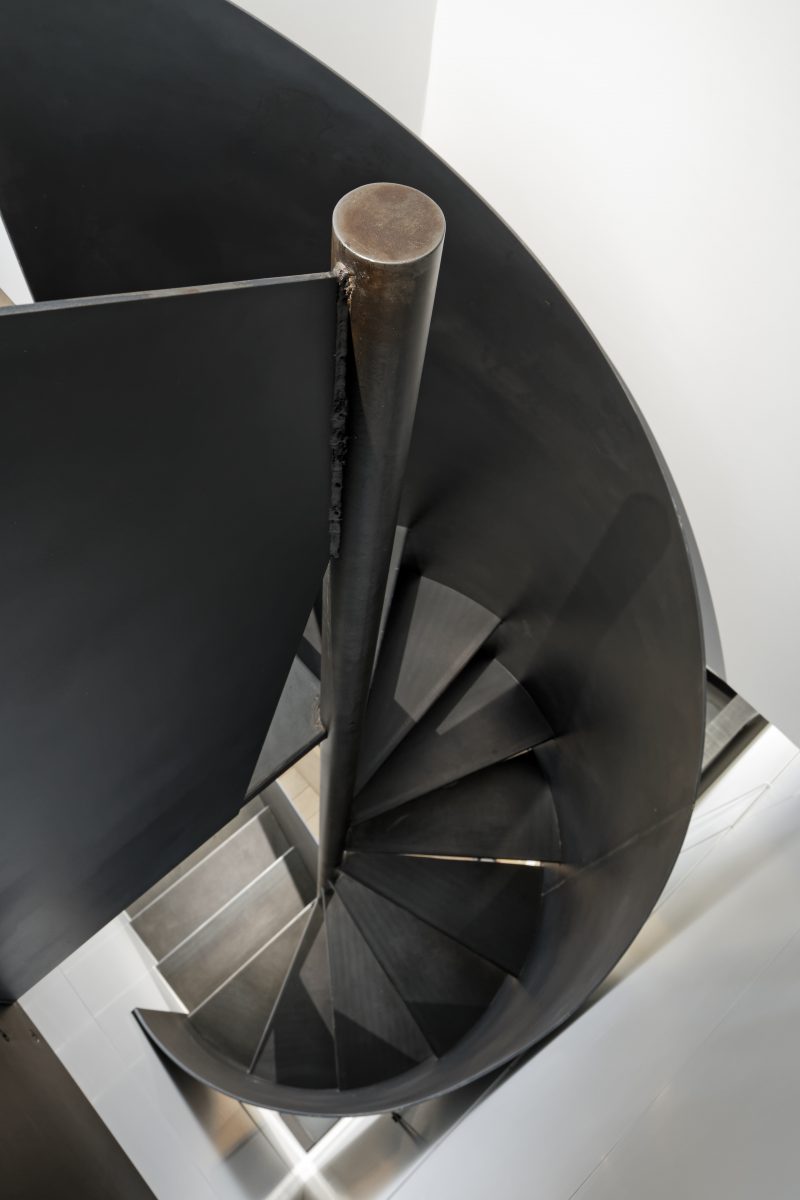In 1951, Michel Ragon, who became the group’s French art critic, organised the first Cobra exhibition in Paris, at the ‘Librairie-galerie’ at number 73 boulevard Saint-Michel.
The same year Ragon wrote the preface to the exhibition Cinq Peintres Cobra (Appel, Balej, Corneille, Jacobsen and Jorn).
In 1961, again, he wrote a preface for the exhibition Cobra dix ans après, held at the Galerie Mathias Fels in Paris. This personal bestiary is sometimes identified with that of Scandinavian mythology (for instance his Aganask, a crocodile and beetle hybrid), and appeared in his book La roue de la fortune (translated from Danish by his wife Matie and Michel Ragon). Here we find the repertory of cults studied from Danish gold horns, with their myths that retain a permanent place in popular culture. Jorn lived only for his painting, with no concern for wealth or reputation. The art world’s indifference to his work, however, and the extreme poverty in which he lived for much of this period, forced him to leave Paris in 1953 for a Swiss sanatorium.
Jorn subsequently lived between Paris, Switzerland and Albisola. Period of Modifications, collages composed from destroyed paintings.
The Galerie Rive Gauche gave Jorn an exhibition, including 47 paintings, an illustrated catalogue with texts by Yvon Taillandier and René Bertelé and a poem by Jacques Prévert. These were angry works, executed with a wild brush that rapidly painted Jorn’s fantastic visions, excessive colours and images from a world in which everything is inversed: transformed landscapes change into people and back again into landscapes. Jorn was a ‘gestural’ painter before the official institution of Action Painting, painting in an explosion of pleasure.
1987 Retrospective. Lenbachlaus, Munich. Catalogue.
Jorn Foundation, Silkeborg.
Museums: Aalborg – Amsterdam – Brussels – Gothenburg – The Hague – Boston – New York – Pittsburgh – Stockholm.
- Guy Atkins: Catalogue raisonné peintures 1930–1973. Borgen, 5 vols. 1968–1986.



